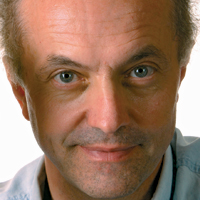We’re all asking the same question: what made them do it?

I’ve been asked this question on the Boston bombing suspects many times while promoting my new book, The Anatomy of Violence, which outlines how biological factors combine with social forces to make some of us violence-prone. I lay out what neurocriminology is revealing on the root causes of crime. Those deep roots are finally being dug up and dissected using brain imaging and molecular genetic tools, exposing the biological culprits working underground to give rise to violence.
There is no systematic research yet on terrorists and mass killers at a psychological level, let alone a biological level. It’s hard enough to identify the causes of plain old street crime, let alone a terrorist attack. Attention has consequently been focused on upbringing, social influences, and, inevitably, ideology. But let’s try to explore all avenues to gain a broader understanding of the Boston Marathon attacks.
First, what do we know more generally about the biology of violence more generally? Something as simple as a low resting heart rate is a surprisingly well-replicated characteristic of aggressive and violent behavior and reflects a lack of fear. Bomb disposal experts have lower resting heart rates than soldier controls. Ted Kaczynski, the Unabomber, had a low resting heart rate at 54 beats per minute. Some offenders are literally coldblooded, heartless killers.
A host of environmental influences more directly impair brain functioning in a way that predisposes to violence. Mothers who smoke during pregnancy are two to three times more likely to give birth to a child who will grow up to be violent. The same is true of drinking. How much does a mother need to drink during pregnancy to raise the level of aggression in her offspring by 30 percent? Just one drink a week will do it. Poor prenatal nutrition is another risk factor. Lead exposure early in life damages the brain and increases the likelihood of adult crime. Physical child abuse and accidental head injuries also damage the developing brain.
I believe there is an early neurodevelopmental basis to violence—the brains of offenders just did not develop normally. Men with cavum septum pellucidum—a neurological abnormality reflecting abnormal development of the emotional limbic system before six months of age—are more likely to be psychopathic and criminal. The seeds of sin are sown early in some.
One limbic structure affected by this early maldevelopment is the amygdala, which generates emotions like fear. The amygdala is physically shrunken by 18 percent in adult psychopaths and functions more poorly in psychopaths during moral decision making. Psychopaths lack fear, conscience, and morality—functions critically subserved by the amygdala. But does poor amygdala functioning precede adult offending?
To answer this question we assessed amygdala functioning in 1,795 3-year-old children using fear conditioning. Yu Gao and I found that those children lacking fear in anticipation of a later punishment were more likely to be convicted 20 years later. We argued that poor amygdala functioning likely has a neurodevelopmental basis, resulting in a lack of conscience that predisposes to offending.
Can the anatomy of violence shed light on what made the Boston bombers tick? It’s clearly impossible to say. We do know however that Tamerlan Tsarnaev was a boxer. Cavum septum pellucidum is not only a characteristic of a psychopathic personality and criminality, but it is also found in adult boxers. It has been argued that early maldevelopment of the limbic system predisposes to fearlessness and aggression, traits which nudge these individuals into boxing—the so-called born-to-box hypothesis. Might early maldevelopment of the emotional brain have resulted in Tamerlan’s aggressive, fearless, domineering personality? He appears to have been involved in domestic violence. He was also fearless in planting the bombs with little personal concern for the consequences of his behavior.
And what of his accused brother, Dzhokhar? The ability to carry out such a monstrous act in cold blood, and to walk away calmly from the scene of destruction while others fled, shows both a patent lack of fear and a callous disregard for others. We do not know the heart rates of the Tsarnaev brothers, but their fearlessness parallels that of the Unabomber and psychopathic killers. Were there not reflections of a deceptive, stimulation-seeking, and coldblooded psychopathic personality in Dzhokhar? He wanted to party in New York after the bombings, and he went back to college as if nothing had happened. His post-bombing tweets of “stay safe” hints of sham concern for others, while “I'm a stress free kind of guy” appears to self-endorse his fearlessness.
In this causal context, it’s a toxic mix of both biological and social processes that in combination explain violence–a “biosocial” interaction. The upbringing of the two suspects with a disrupted home environment, the stress of immigration and acculturation, and social alienation likely conspired with biological predisposing factors, set against a wider backdrop of social disenchantment and political ideology.
Biology alone will never explain mass killings and terrorism. But in the final analysis we may need to look beyond the usual social suspects to gain a more complete understanding of what makes violent offenders tick.






